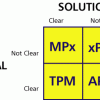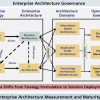Strategic advice to leverage new technologies
Technology is at the heart of nearly every enterprise, enabling new business models and strategies, and serving as the catalyst to industry convergence. Leveraging the right technology can improve business outcomes, providing intelligence and insights that help you make more informed and accurate decisions. From finding patterns in data through data science, to curating relevant insights with data analytics, to the predictive abilities and innumerable applications of AI, to solving challenging business problems with ML, NLP, and knowledge graphs, technology has brought decision-making to a more intelligent level. Keep pace with the technology trends, opportunities, applications, and real-world use cases that will move your organization closer to its transformation and business goals.
Recently Published
Establishing the Business Architecture Practice: A Case Study
Business architecture (BA) is rapidly becoming a mainstream concept for many business and IT professionals. Consequently, it is essential for professionals to establish a BA practice that can provide value in the strategic planning and operational efficiency of an enterprise. In the accompanying Executive Report, we present a comprehensive real-world case study of a US healthcare organization and explore the four stages involved in establishing the BA practice.
How to Transition from a Traditional to a Robust APM Environment
How to Transition from a Traditional to a Robust APM Environment
Complex project management (CPM) dominates the project management environment that has emerged over the past 20 years. The days of traditional projects, where the goal and its solution were completely and clearly defined at the outset, are history. They have been replaced by projects whose goal may be clearly specified but whose attainment (the solution) is not known.
Establishing the Business Architecture Practice: A Case Study
Business and IT professionals are rapidly embracing business architecture (BA) as a mainstream concept to recognize their needs, goals, and vision for business transformation. However, establishing a comprehensive, pragmatic BA practice is still in its primitive stage.












